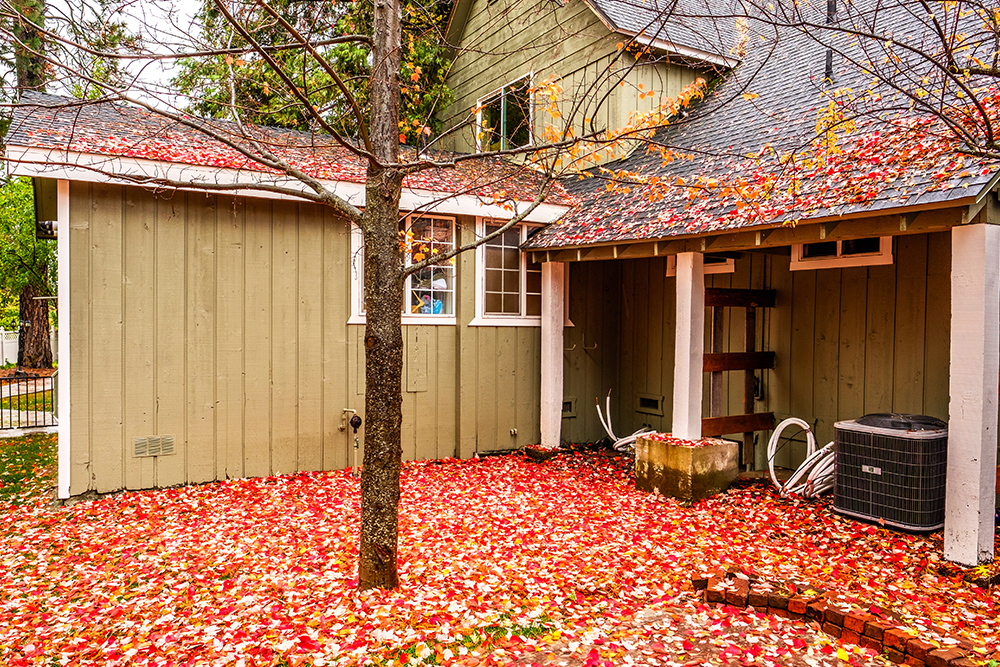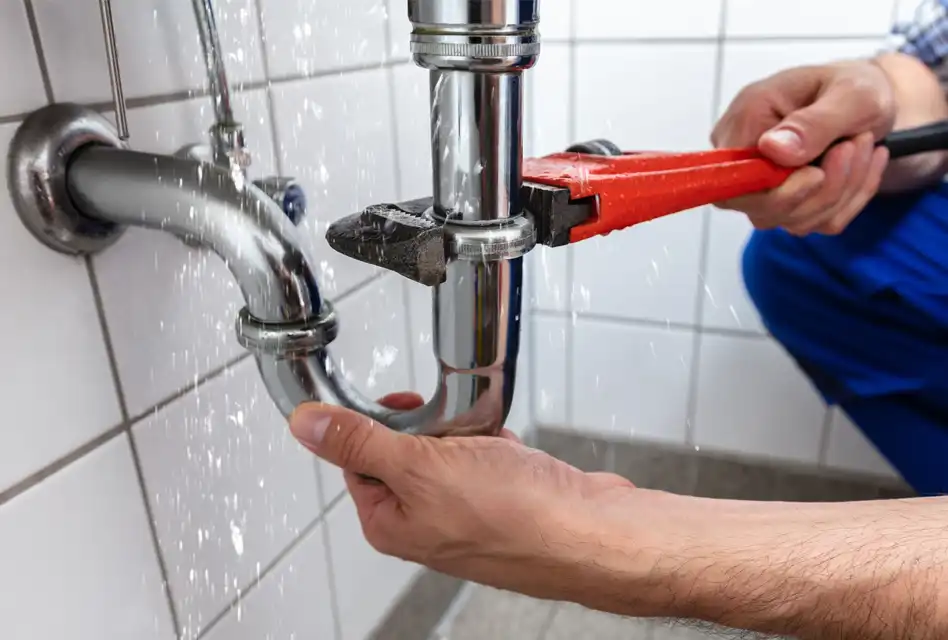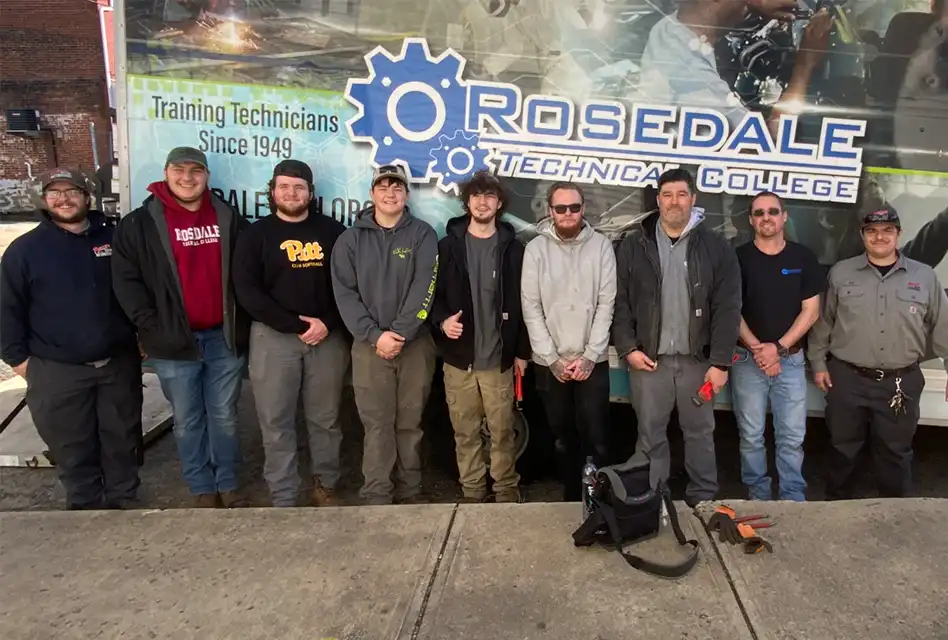Warning Signs that Your Furnace Is on Its Way Out
You’re probably going to boycott this blog if we begin by talking about the upcoming heating season. But, as we know, the fall and winter months are closer than we like to think. And as every southwestern Pennsylvania homeowner knows, they can bring an abundance of unpredictable weather.
That said, we also know your furnace is one of your most important investments, and pieces of equipment, in your home. As we’ve noted in past blogs, it pays to keep track of just how efficiently and effectively your furnace is running. It’s also crucial to know when to replace it before it costs you more in repairs than a new purchase or, even more importantly, it becomes unsafe.
Truth is, replacing a furnace at any time is not an easy task but replacing it in the middle of a cold winter day can be daunting. Also, the cost to replace your heating system in an emergency situation may be a bit higher than a well-planned furnace replacement.
So, here’s the key question: how do I know when it’s time to replace my heating system?
Below are some “warning signs” that you should be looking for. Separately, these signs may not be enough reason to replace your furnace, but the more warning signs that apply to your furnace, the more likely you need a new one.
Furnace Warning Sign #1
Perhaps the first true warning sign is to ask: How old is my furnace?
If your furnace is past the 20-year mark and beginning to have maintenance issues, there is a very likely chance it will need to be replaced. It may still be working, but it’s likely not operating at maximum efficiency and your utility bills are probably at all-time highs as a result.
Furnaces are a lot like cars; the older they are, the more maintenance they need, with most breakdowns occurring in the last two years of their lives. If your furnace is roughly 20 years or older and you have a repair costing more than 15 percent of a new furnace, you should go ahead and replace it, because it’s more likely to break down again, and soon.
Generally speaking, however, no matter how old your furnace, if the cost to repair is 50 percent or more of the cost of new furnace, you should replace it.
Not sure how old your furnace is? Start by checking whether it has a pilot light. If it does, it could be over 25 years old, indicating it might be time to consider a replacement. You can also check the owner’s manual (if it’s still lying around in your junk drawer) or contact the unit’s manufacturer to find out its age.
Warning Sign #2
Are your heating bills steadily increasing?
There are several factors that might lead to an increase in your annual fuel utility bills. First, the cost of the fuel itself may be increasing. As we know, gas and oil prices fluctuate month to month.
The second factor that could cause an increase in annual heating expenses is a decrease in the efficiency of your heating system. If you’ve been scheduling regular professional maintenance every year and had your air ducts properly sealed, your energy bills shouldn’t increase dramatically. When you experience increases in your average heating bill, coupled with an aging furnace, it might be time to begin considering replacement. The extra money you’re paying in utility costs could go towards buying a new furnace.
Note: According to the Department of Energy, replacing an older heating system that offers only 50 percent efficiency with a system offering 95 percent efficiency, you can save more than $47 for every $100 in fuel costs!
Warning Sign #3
Does your house have a number of cold spots?
If you’re noticing some rooms in your house are colder than others, it’s likely the result of an old furnace and outdated duct system losing its ability to distribute heat evenly throughout the house. As we’ve noted, aging furnaces lose their capacity to heat your home effectively. Although a repair can provide a temporary solution and maybe allow you to squeeze through another heating season, installing a new heating system that’s properly sized for your home’s heating needs should be taken into serious consideration.
Furnace Warning Sign #4
Are your experiencing frequent repairs?
If you’re spending more money on car repairs than what you would spend on a new vehicle, it’s time to think about a replacement. Same goes for your furnace. If you’ve had a major furnace repair in the last year and find you’re in need of another one, it might be better to replace the entire heating unit. As homeowners are well aware, it doesn’t take long to spend a significant amount of money just to keep the old furnace running.
Keep in mind, too, that some older units have parts that are very expensive to replace, or you have to wait for replacement parts because they are no longer commonly stocked. While waiting for parts, your house could be getting more and more uncomfortable.
Speak with your HVAC technician at Phillips Heating & Air Conditioning about how repair costs compare with a total furnace replacement. You might be pleasantly surprised.
Warning Sign #5
Is your house dry or dusty?
Put simply, older furnaces lack the ability to moisturize and clean the air in your home.
In the winter, does your house feel stuffy? Does the air feel stale? Does anyone in your family suffer from allergies to airborne dust, mold, pollen, viruses or dander? Or does anyone suffer from dry nose, dry throat or dry skin? While some of these symptoms naturally occur during wintertime, if you are experiencing a higher level of symptoms than in the past, especially while inside, you might have a problem with your furnace.
Other signs may be frequent dust accumulation, static shocks, furniture cracking and musical instruments that do not stay in tune. These may seem like trivial and somewhat silly observations, but all suggest that your old furnace is simply not capable of providing you with the comfort you and your family may want and need.
True, poor indoor quality may not be associated with on old furnace. Poor ventilation and other reasons can cause it, too. Please contact the professionals at Phillips to have one of our service technicians assess your situation as we may have other air quality services and solutions for you.
Furnace Warning Sign #6
Do you have abnormal furnace smells?
Furnaces can smell like the fuel they use, especially when they are turned on for the first time in the year. Most furnace odors dissipate as the unit runs, however, if you notice a strong smell of fuel around the unit, an odor that appears suddenly or a scent that doesn’t go away over time, you may have a furnace problem.
These smells can result from a wide range of issues, from a gas leak to excessive dust inside the unit. Have your HVAC technician assess the odor to determine the cause.
Warning Sign #7
Is your burner flame yellow instead of blue?
When operating normally, the burner flame should burn steady and blue. If it flickers or turns yellow, this could be a sign of excessive carbon monoxide production. This odorless, tasteless and colorless gas is toxic at high enough concentrations.
At the very least, the fuel is not burning as cleanly and efficiently as it could.
Other indictors of carbon monoxide include soot streaks around the furnace, absence of upward draft in the chimney, and rust on flue pipes and other connections.
If you suspect elevated carbon monoxide gas in your home, the Consumer Product Safety Commission says that you should immediately move outside to fresh air, call emergency services, and do a headcount to check to account for everyone.
Once everything is stabilized, you should contact your service professional to find out the source of the problem.
Warning Sign #8
How do you and your family feel?
As furnaces age, they can develop cracks in the heat exchanger. Again, carbon monoxide, if present, could leak into your home undetected. Signs may be frequent headaches, a burning feeling in nose or eyes, nausea, disorientation or flu-like symptoms. If you or any family members are experiencing these types of symptoms, again, it may be due to carbon monoxide. You should immediately get everyone out of your house into fresh air. Contact emergency services and seek medical attention if necessary. A blood test will confirm or negate the presence of carbon monoxide in the body.
Once the situation is stabilized, contact your service technician to help identify the cause of the problem.
The good news is that carbon monoxide poisoning can be prevented with simple actions such as installing a CO alarm and maintaining your fuel burning appliances. A CO detector is a must for any home and just as important as a smoke detector.
Phillips Heating & Air Conditioning has a full range of CO detectors from which to choose.
Furnace Warning Sign #9
Does your furnace operate loudly?
Furnaces tend to make some noise when they turn on and off. After all these years, you should know how your furnace should sound, right? Any squeaking, banging, popping, rattling, hissing, humming, clicking or other strange noises could be a telltale sign and point to serious problems. Another furnace noise to never ignore is the constant running of your furnace blower fan. Older heating systems tend to make these strange noises at the end of their service lives.
Your first step is to have one of our furnace technicians take a look. If a simple fix can restore your heating equipment to proper working order, great! If not, you might want to consider replacing it.
Furnace Warning Sign #10
Does your furnace have visible signs of rust or corrosion?
Rust or corrosion could indicate a furnace reaching the end of its life cycle and a possible safety hazard. Be sure to get it checked out right away by a furnace specialist.
One more warning . . .
Remember, too, that correct installation is vital to the efficiency, functioning and longevity of any furnace. You can find a lot of people willing to install a furnace (you know, cousin Joe who’s installed “plenty” of furnaces), but it’s crucial to make sure that person is qualified. If your furnace was not installed by a professional, your heating system may have a shorter lifespan. Moreover, you will not save money on utility bills if the furnace is not properly sized and installed.
Some closing thoughts . . .
Bear in mind that any of these warning signs can clue you in to the fact that something is wrong, but not necessarily mean that you need to replace your furnace. Sometimes, a simple cleaning is all that’s called for. Other times, especially with a unit that was installed in the last few years, it could be just a single component that needs attention.
If you’ve gone through this list of warning signs and something still doesn’t seem right, don’t let it come down to a coin toss or consulting a Magic 8-Ball. Trust your gut and give us a call. We’ll let you know if it’s time for a new furnace.
Keep in mind, too, that there are a variety of products available to enhance the performance of a new furnace, including indoor air quality enhancers such as filters and humidifiers, air scrubbers and UV lights, among others. Such enhancements are less expensive to install if purchased and installed at the same time as the furnace. Your Phillips service technician has all the details.
Finally, getting an expert opinion means knowing exactly what you’re dealing with. It also means safety and the peace of mind that goes with it. The technicians at Phillips will thoroughly inspect your system and let you know what’s what. Also, keep in mind that seasonal maintenance can help keep your furnace running its best for its entire service life. In either case, it’s time to contact us.







